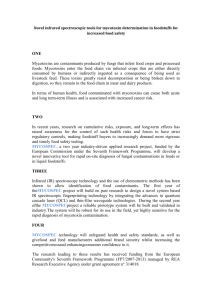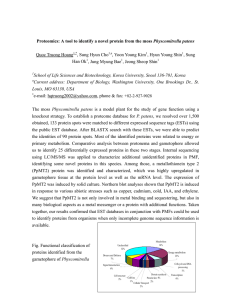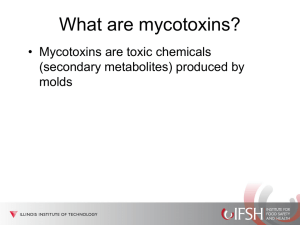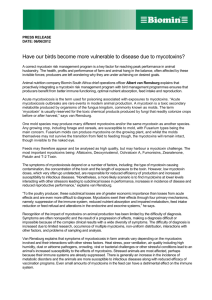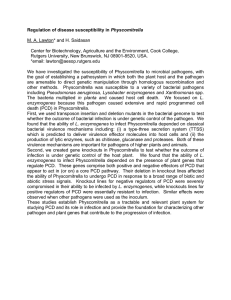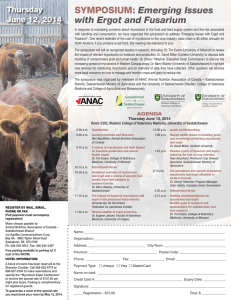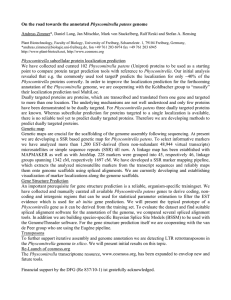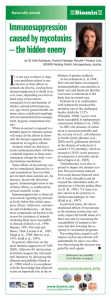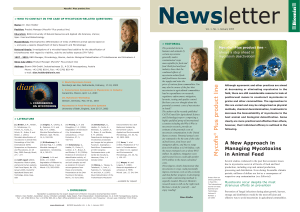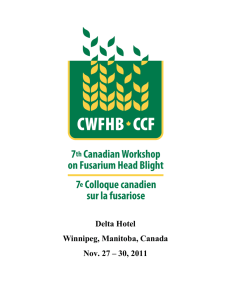Genetic manipulation of cell death induced by mycotoxins in Physcomitrella
advertisement
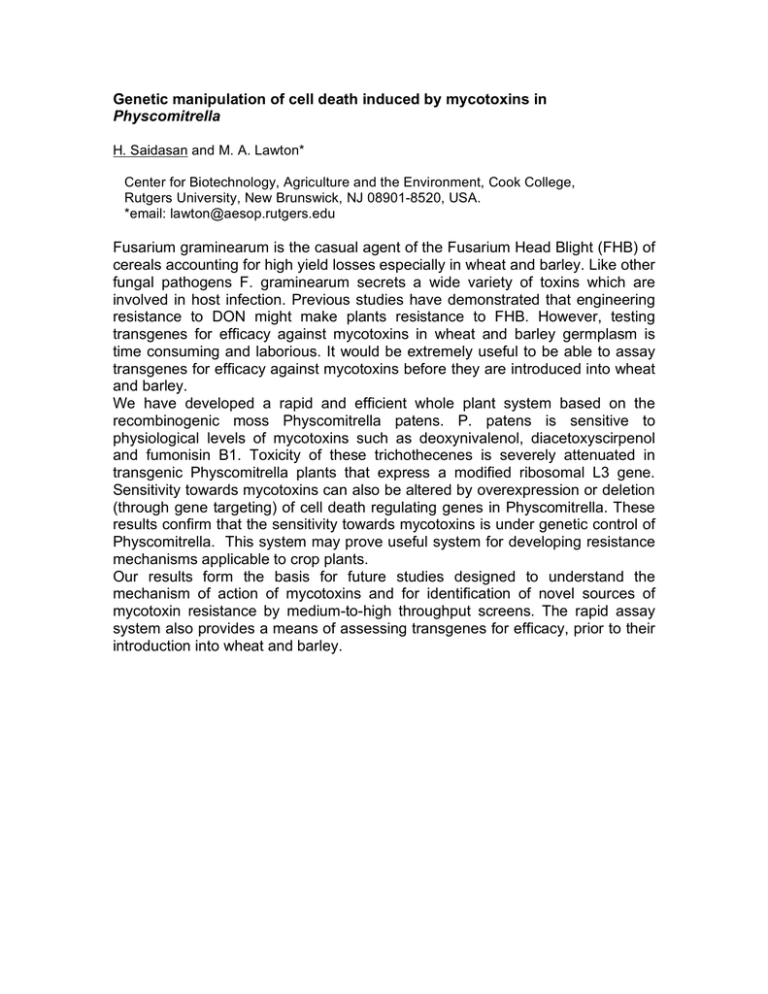
Genetic manipulation of cell death induced by mycotoxins in Physcomitrella H. Saidasan and M. A. Lawton* Center for Biotechnology, Agriculture and the Environment, Cook College, Rutgers University, New Brunswick, NJ 08901-8520, USA. *email: lawton@aesop.rutgers.edu Fusarium graminearum is the casual agent of the Fusarium Head Blight (FHB) of cereals accounting for high yield losses especially in wheat and barley. Like other fungal pathogens F. graminearum secrets a wide variety of toxins which are involved in host infection. Previous studies have demonstrated that engineering resistance to DON might make plants resistance to FHB. However, testing transgenes for efficacy against mycotoxins in wheat and barley germplasm is time consuming and laborious. It would be extremely useful to be able to assay transgenes for efficacy against mycotoxins before they are introduced into wheat and barley. We have developed a rapid and efficient whole plant system based on the recombinogenic moss Physcomitrella patens. P. patens is sensitive to physiological levels of mycotoxins such as deoxynivalenol, diacetoxyscirpenol and fumonisin B1. Toxicity of these trichothecenes is severely attenuated in transgenic Physcomitrella plants that express a modified ribosomal L3 gene. Sensitivity towards mycotoxins can also be altered by overexpression or deletion (through gene targeting) of cell death regulating genes in Physcomitrella. These results confirm that the sensitivity towards mycotoxins is under genetic control of Physcomitrella. This system may prove useful system for developing resistance mechanisms applicable to crop plants. Our results form the basis for future studies designed to understand the mechanism of action of mycotoxins and for identification of novel sources of mycotoxin resistance by medium-to-high throughput screens. The rapid assay system also provides a means of assessing transgenes for efficacy, prior to their introduction into wheat and barley.
